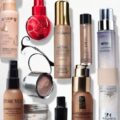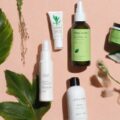Asbestos is a naturally occurring mineral fiber that was once widely used in building materials and consumer products. However, it has been linked to various respiratory diseases and cancers. Over the past few decades, strict regulations have limited the use of asbestos in commercial applications. Still, some cosmetics and personal care products have tested positive for trace amounts of asbestos.
The health risks associated with asbestos exposure depend on the dose and duration of exposure. Brief or low-level exposures, such as from using makeup containing trace asbestos, likely pose little to no risk. However, it’s reasonable for consumers to want to avoid these exposures when possible.
Common Questions
How does asbestos get into makeup?
Asbestos contamination in makeup is often traced to talc, an ingredient used in many powders and eye shadows. Talc is frequently mined near asbestos deposits, increasing the risk of cross-contamination. Manufacturers are expected to test raw materials and final products to ensure no asbestos particles are present.
Which makeup products might contain asbestos?
The most common asbestos-contaminated makeup products are powders and eye shadows, particularly those containing talc and other naturally-derived minerals. However, asbestos has also been detected in some lipsticks, foundations, blushes, and other complexion products.
What are the health risks?
The health risks depend largely on the level of exposure. Makeup that contains trace amounts of asbestos likely poses very little risk for most consumers. However, talc used frequently and over many years could lead to higher cumulative exposures. Those at greatest risk are factory workers involved in manufacturing asbestos-contaminated talc or makeup.
How can I check if my makeup contains asbestos?
Consumers have limited ability to test makeup products for asbestos. Your safest option is to choose reputable brands that publicly report thorough testing of ingredients and finished products. You can also check government recall lists for products confirmed to contain asbestos.
What should I do if my makeup contains asbestos?
First, stop using the product immediately. Safely secure it in an airtight bag or container, keeping it isolated until proper disposal. Check recall lists and contact the manufacturer directly to determine next steps. You may need to return the product for a refund. Generally, brief use of a product with trace asbestos does not warrant medical evaluation.
While asbestos in makeup is concerning, the risk for consumers is likely very low with most cosmetic products on the market. Choosing established, responsible brands and discontinuing use of recalled items can help you avoid unnecessary exposure.









